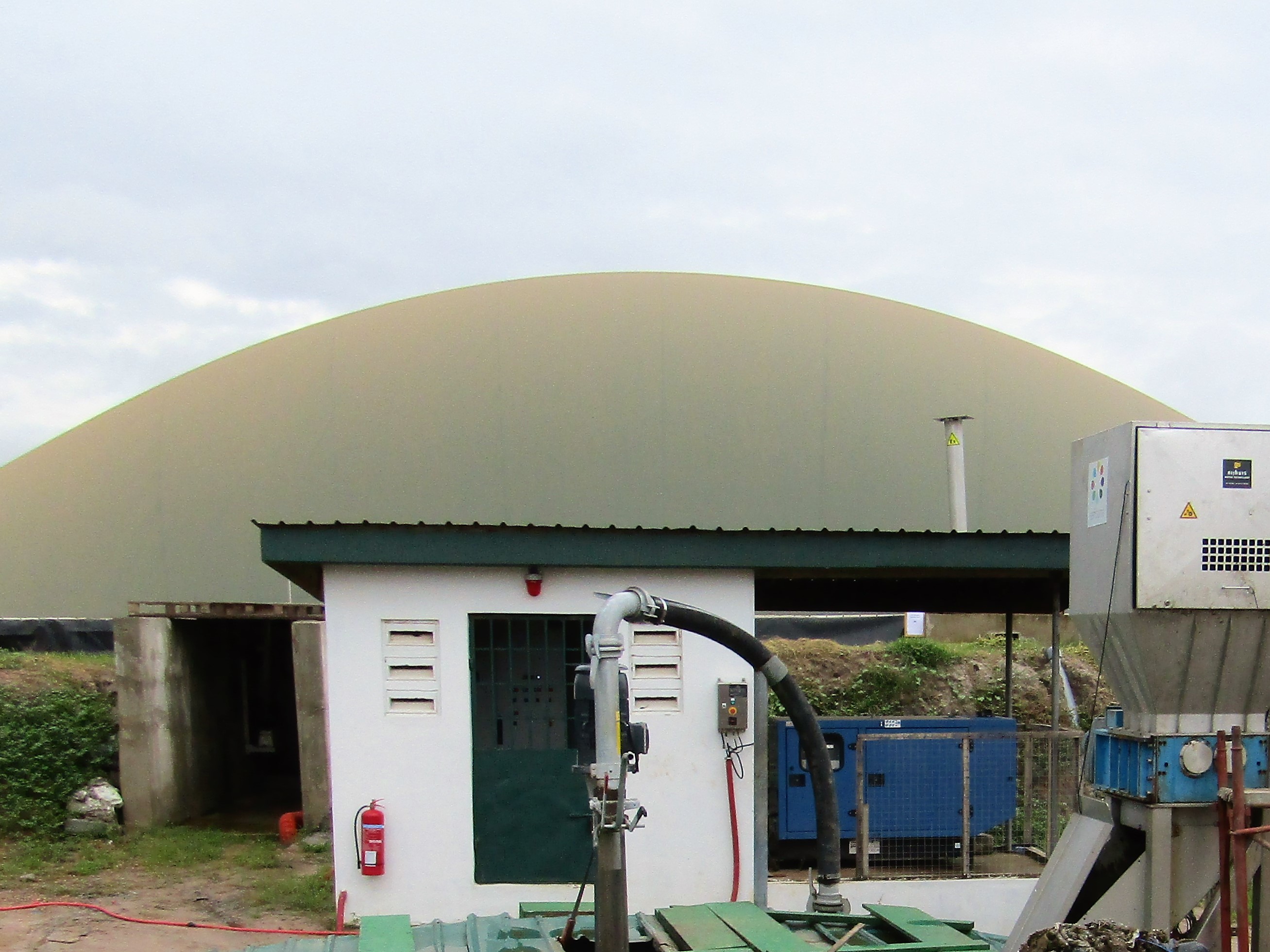Two webinars to explore co-benefits of biogas and biomethane

When produced with a circular approach, biogas and biomethane production are often more sustainable, economically efficient and can help tackle environmental issues, such as soil erosion and waste management.
Biogas is produced from anaerobic digestion, in which micro-organisms digest organic materials in the absence of oxygen. It can be used for heating and power production, or can be upgraded to biomethane for fuel for transport or injected into the natural gas grid. Anaerobic digestion generates two valuable by-products, namely digestate, which can be used as a soil amendment, and biogenic CO2, which can be used as an input in other bioeconomy industries, e.g., to produce sparkling drinks, according to the circular economy principle.
Digestate: a nature-based solution to optimize the water-energy-food nexus in the agrifood system
When digestate, a by-product of biogas production, is used to amend the soil on which crops are grown, it helps ensure the full circularity of the bioenergy production process, increasing soil fertility and optimising resources a local production. This is one of the principles employed by Assoro Biometano, a company in the heart of Sicily that sells biomethane made by recycling organic matter from the local Dittaino valley - a semi-desert region with poor nutrient availability.
Assoro Biometano’s production employs waste from orange peelings, olive pomace, wastewater and livestock effluents, all sourced locally within 50 km. The 4.4 million cubic meters produced yearly are all supplied to local customers, enough to drive for more than 74 million km with methane-fuelled vehicles.
The company is also focusing on improving the fertility of the surrounding valley, which is under serious risk of desertification. By apply digestate as a fertilizer, they have observed improvements in soil quality, nutrients, and humidity, which even reduced the need for irrigation – a particularly welcome outcome in the arid area.
Promoting anaerobic digestion for waste management
Management and disposal of organic waste is a major global issue. Anaerobic digestion offers a good opportunity for reducing waste volume and odors, abating GHG emissions derived from natural decay, while creating added value from the production of clean energy and related by-products. A wide range of organic waste can be used as feedstock for anaerobic digestion, such as industrial wastewater, agri-food waste and residues.
The project’s main ambition is to increase biomethane production by using biogas from the main digester as well as external green electricity from solar and wind to power the plant, while making the best use of digestate. As excess renewable electricity cannot always be injected into the electricity grid, direct use of electricity to produce additional biomethane represents a cheap energy storage option.
Successful practices already exist. In Linköping, Sweden, the implementation of a separate collection system using “green bags” for food waste prompted a national pledge for 75% of food waste to be sorted and treated biologically so that plant nutrients and biogas are recovered. In 2012 the city of Milan, Italy, introduced a door-to-door separated waste collection system and an anaerobic digestion treatment of organic solid waste to produce biogas and compost. Milan’s overall separated collection rate reached 62.6% in 2020.
To understand the efficacy and replicability of successful projects or policies dedicated to waste management and the establishment of anaerobic digestion plants, the MEETS methodology has been developed. This innovative methodology considers policy and context variables related to various dimensions, namely market, effectiveness, ecosystem, time and side effects (MEETS). It allows for the identification of successful and replicable policies, as well as those having generated only small impacts, and is useful to understand how replicability is influenced by the context, specific characteristics of the policy and factors beyond a country’s political priorities.
The solutions illustrated during the webinars address waste management issues while providing energy and soil amendment through a circular economy principle embracing the Water-Food-Energy Nexus. The technology is ready, but to increase adoption of such approaches accommodating legislation is required, together with continuous research as well as careful governance and guidelines for sustainable practices.
Promoting anaerobic digestion for waste management


